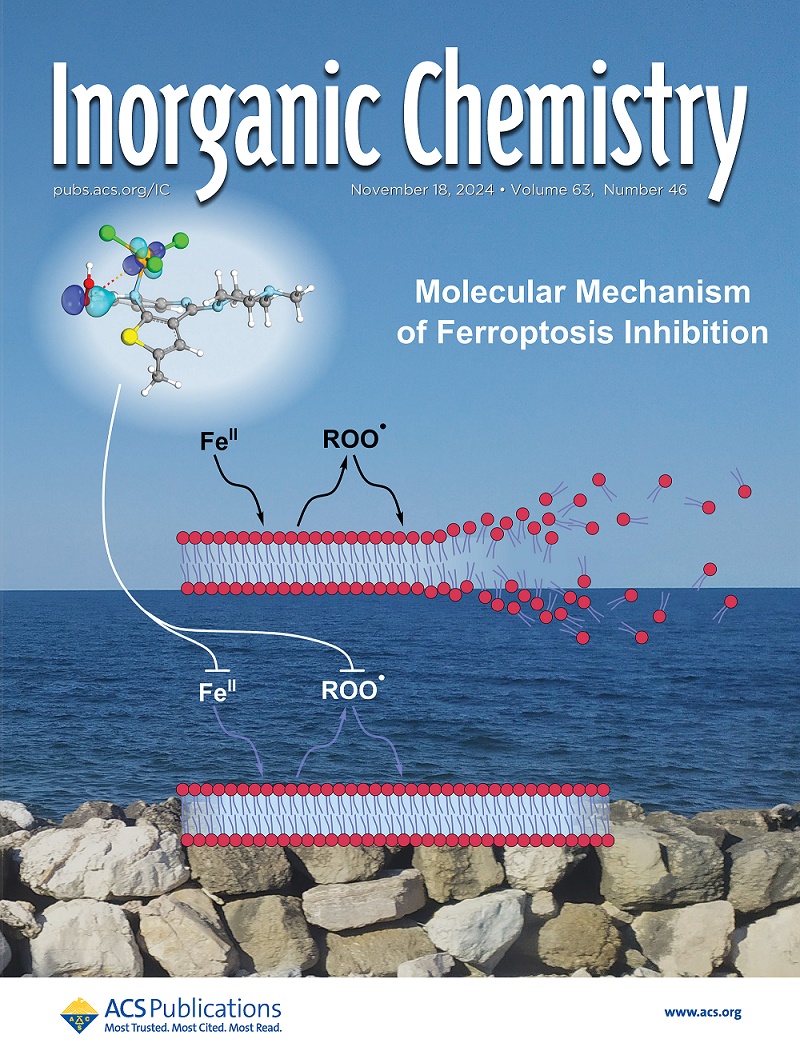Bader Charge Balance Mechanism Realizes Industrial-Grade Current Hydrogen Production.
IF 4.7
2区 化学
Q1 CHEMISTRY, INORGANIC & NUCLEAR
引用次数: 0
Abstract
The hydrogen production technology of water splitting under a high current density is the key to solve the efficient utilization of hydrogen energy. However, it is difficult for existing catalysts to exhibit bifunctional high-current activity in the same electrolyzer, considering that the bimetallic site can endow the catalytic material asymmetry and heterogeneity and then change the intrinsic electronic structure. Herein, we constructed a La-Fe dual-site coupled self-assembled membrane electrode (D-LaFe-SAME), and the introduction of the dual site reduced the Bader charge value of the La site from 0.87 to 0.83|e|, while the Bader charge of the Fe site increased from 0.69 to 0.70|e|, thus optimizing the Bader charge value of La-Fe active sites to a close equilibrium. Consequently, the free energy barrier of the rate-determining step is optimized, and the catalytic activity is greatly improved. Prominently, the optimal D-LaFe-SAME can achieve current densities of up to 2000 mA cm-2 at very low overpotentials (-640 mV for HER and 626 mV for OER), which is even better than the commercial precious metals Pt/C and IrO2. Surprisingly, when we use a large area of D-LaFe-SAME for overall water splitting, it can operate stably at currents up to 4 A. The dual-site coupled strategy based on the Bader charge balance mechanism proposed in this work is crucial for the construction of an efficient and high-current electrocatalytic system for hydrogen production in the same electrolyzer and plays a key role in achieving the goals of carbon neutrality.Bader电荷平衡机制实现工业级电流制氢。
高电流密度下的水裂解制氢技术是解决氢能高效利用的关键。然而,现有的催化剂很难在相同的电解槽中表现出双功能的大电流活性,因为双金属位点会赋予催化材料不对称性和非均质性,从而改变其本禀电子结构。本文构建了一个La-Fe双位点偶联自组装膜电极(D-LaFe-SAME),双位点的引入使La位点的Bader电荷值从0.87降低到0.83|e|,而Fe位点的Bader电荷值从0.69增加到0.70|e|,从而使La-Fe活性位点的Bader电荷值优化到接近平衡。从而优化了决定速率步骤的自由能垒,大大提高了催化活性。值得注意的是,最佳的D-LaFe-SAME可以在非常低的过电位(HER为-640 mV, OER为626 mV)下实现高达2000 mA cm-2的电流密度,甚至优于商业贵金属Pt/C和IrO2。令人惊讶的是,当我们使用大面积的D-LaFe-SAME进行整体水分解时,它可以在高达4 a的电流下稳定运行。本文提出的基于Bader电荷平衡机制的双位点耦合策略,对于在同一电解槽内构建高效、大电流的制氢电催化系统至关重要,对实现碳中和目标具有关键作用。
本文章由计算机程序翻译,如有差异,请以英文原文为准。
求助全文
约1分钟内获得全文
求助全文
来源期刊

Inorganic Chemistry
化学-无机化学与核化学
CiteScore
7.60
自引率
13.00%
发文量
1960
审稿时长
1.9 months
期刊介绍:
Inorganic Chemistry publishes fundamental studies in all phases of inorganic chemistry. Coverage includes experimental and theoretical reports on quantitative studies of structure and thermodynamics, kinetics, mechanisms of inorganic reactions, bioinorganic chemistry, and relevant aspects of organometallic chemistry, solid-state phenomena, and chemical bonding theory. Emphasis is placed on the synthesis, structure, thermodynamics, reactivity, spectroscopy, and bonding properties of significant new and known compounds.
 求助内容:
求助内容: 应助结果提醒方式:
应助结果提醒方式:


